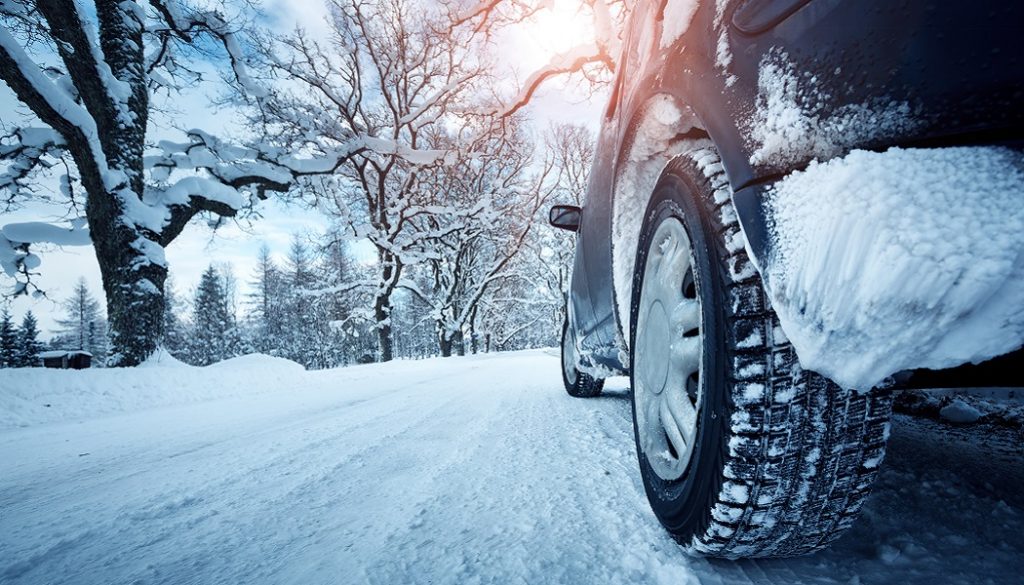

Why do you need to know how to winterize a car? No matter the vehicle, if you live anywhere where it snows, you need to winterize your car. Not only will it help ensure that your car starts in the morning, it will help keep you and your family safe. Here are some tips to winterize your car. Let’s talk about some things you could do to make sure your car will start, drive safely and ensure that you can see out of it on freezing cold days. We’ll also touch on a few things you could carry in your car in case of emergencies.
When it is cold outside and the engine oil is think, your car battery is called upon to deliver that extra starting power. An older car battery will not have the reserve it needs to bring your engine to life. When you want to know how to winterize a car, you may need to replace old car batteries.
A good rule of thumb is batteries usually fail shortly after their warranties end. A battery warrantied for 36 months will not normally last much longer than three years. It’s not worth taking a chance on, so replace it before the first freeze of winter. A car battery will not get any cheaper, so do not wait. Look at the warranty sticker and purchase date on your battery before cold weather hits.
Condensation collects in the bottom of fuel tanks and gets sucked by the fuel pump into the fuel lines. Yes, that little bit of condensation can freeze overnight, and prevent your engine from starting.
So, simply add a small bottle of fuel additive to your fuel tank every 3,000 miles or so. Buy one that specifically says “fuel de-icer, removes water” or something to that effect, and is not simply a fuel system cleaner.
If you have got the inclination, it is always a good idea to swap out your regular tires for winter tires before the snow starts falling. Even if you have got an AWD or 4WD vehicle, winter tires can be a big help.
If you are not going to replace your tires with snow tires, make sure the tires you plan on using are properly inflated. As the weather drops outside, so does the pressure inside your tires. Properly inflated tires will help provide the best contact between your tires and the slick road surface.
Related Search Topics (Ads)
If you have got a rear-wheel-drive car, you might consider throwing some extra weight in the trunk to help your back tires get a little more traction. The extra weight will adversely affect your gas mileage, but in the winter a little extra weight over the rear axle is a good idea. A few bags of sand as part of how to winterize a car would work nicely, you can also use that sand to throw in front of your rear tires to provide more traction if you do get stuck. Pack a small shovel, too.
Along with the sandbags and small shovel, as part of how to winterize a car, you need to prepare a winter roadside emergency kit in the event you do get stuck out in the cold.
In addition to your regular roadside emergency kit, you will want to make sure you have a pair of heavy-duty, water proof gloves, a blanket or two, a flashlight and spare batteries and ice scrapers.
If you or somebody in your family takes medicine daily for critical issues such as blood pressure, diabetes or asthma, it is a good idea to put a few days’ worth of spares in your car’s trunk.
It’s also a good idea to throw some old maps in the roadside kit, in case you are in an area where GPS isn’t working or your cell phone is out of juice.
The engine and the paint. Yes, paint is considered a part, and it is very expensive to replace. Acid rain, diesel exhaust, air pollution embedded in snow: it all eats away at paint. Wash your car and apply a good coat of wax before winter.
During winter, wash it monthly at a drive through car wash. As part of how to winterize a car, pay extra to have the chassis and undercarriage wash done. That will rinse off some of the salt that your car picks up from the roads. Given enough time, salt will eat through steel.
Mud and dried salt on your expensive wheels? Don’t leave it there — wash it off now. Don’t wait until spring.
You’ll also want to make sure all your fluids are at the proper levels. This includes your anti-freeze and wiper fluid. It’s probably a good idea to go ahead and replace your wiper blades while you are at it.
Go ahead and get your car’s oil changed, too. But you already do this every season, right? That one goes beyond just how to winterize a car.
Related Search Topics (Ads)